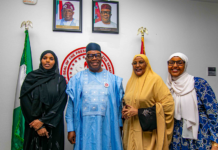Why does AMISOM stay in Somalia? What has it achieved over the last 12 years? Can its miscellaneous and under-resourced forces really defeat Al-Shabaab, a transnational organization that relies—successfully—on asymmetric and terror tactics, but also has deep roots in the local population? When might it exit a country that is second only to South Sudan in the US-based Fund for Peace’s Fragile States Index for 2018? Does its experience offer broader lessons for the design and implementation of peace operations elsewhere in the world? Fighting for peaceprovides an extensive, but necessarily incomplete, range of answers to these and similar questions.
AMISOM is, in many respects, a striking operation. Only five of the African Union’s (AU) 54 member countries contribute troops (Burundi, Djibouti, Ethiopia, Kenya and Uganda), and only six send police (Ghana, Kenya, Nigeria, Sierra Leone, Uganda and Zambia), but it is the AU’s biggest and longest-running mission. It is also the most expensive. At its peak, it cost approximately US$1 billion a year, and it remains heavily reliant on funding from, for example, the European Union and the UK; in August 2018, the UK allocated an additional £7 million to AMISOM on top of the £385 million it contributed towards international efforts to help build a secure, stable and prosperous Somalia.
But AMISOM is much more than a conventional UN-style peacekeeping operation. Troop-contributing countries may be attracted to both organizations for the same reasons (international approval, access to military training, and, most importantly, funding), but unlike their UN peers, AMISOM’s 22,000 personnel are expected to conduct war-fighting, counter-insurgency, stabilization and statebuilding operations, as well as help to improve police–community relations, facilitate elections and ensure the delivery of humanitarian assistance. Paul Williams’s carefully documented account of AMISOM’s history between 2004 and 2017 assesses its ability to achieve this.
Williams aims to analyse AMISOM’s evolution and understand how it and its key partners tried to overcome the major operational challenges confronting it, an aim which is reflected in the book’s division into two parts. The first seven chapters tell the story of AMISOM’s operations, which ranged from 2009’s initial stalemate to offensive operations, expansion, consolidation and a surge that lasted from 2014 till 2017, while the last six address the main challenges confronting the mission: logistics, security sector reform, civilian protection, strategic communications, stabilization and exit.
Much of this empirical material is relatively well known, not least because of Williams’s extensive publications on AMISOM; his ‘The battle at El Adde: the Kenya Defence Forces, al-Shabaab, and unanswered questions’ (International Peace Institute, 2016), is a case in point. But the book does much more than recount a potentially dry story, and the inclusion of multiple—and fascinating—anecdotes helps to provide the granular detail that makes the issues under discussion come alive. Unfortunately, the book does not include illustrations, but readers can begin to appreciate the situation that many AMISOM troops found themselves in by looking at the photographic essay Williams produced with Susan Schulman for the RUSI Journal in 2012 (Susan Schulman and Paul Williams, ‘Photo essay: AMISOM’, RUSI Journal 157: 5, Oct. 2012, pp. 32–45).
For this reviewer, chapter four’s account of the ‘Offensive’ of 2010–11 against Al-Shabaab in Mogadishu stands out, not least because it includes information on tactics and, most notably, logistics, both of which are neglected in the relevant policy and academic literatures. It details, for example, AMISOM’s preparations for urban war, which included developing the skills and equipment needed to fight through buildings and tackling Al-Shabaab’s sniper teams and use of tunnels and improvised explosive devices, through an emphasis on the use of infantry and medical ‘combat life saver first aid’ (p. 106). AMISOM’s experience deserves to be more widely known, as does its use of armoured bulldozers, which echoes that of not only Israeli forces, but also US troops in the second battle of Falluja. As Williams notes on p. 117, the bulldozers proved so effective that Al-Shabaab-controlled radio stations called for their drivers to be targeted as enemies of Islam. An indication of just how deadly the conflict was can be seen in Williams’s observation that AMISOM’s sole level-2 hospital used about 250 bags of blood every month, whereas the standard scale of blood for use in UN peacekeeping operations stipulates supplies of about 10 bags a month.
As this suggests, the book focuses primarily on the role of AMISOM’s military forces and the Somali National Army. This is appropriate, but it means that the account is less comprehensive than it could be. There is, for instance, minimal discussion of the role of the Somali police and the informal groups providing the everyday policing needed for stabilization, development and AMISOM’s own exit. The role of AMISOM’s police is similarly neglected. A minor quibble concerns the lack of a comprehensive bibliography; references are presented as footnotes and topics are indexed, but there is no bibliography at the end of the book, which makes finding references a time-consuming experience. But this is a secondary issue, and Fighting for peace is likely to remain a key account for the foreseeable future.




